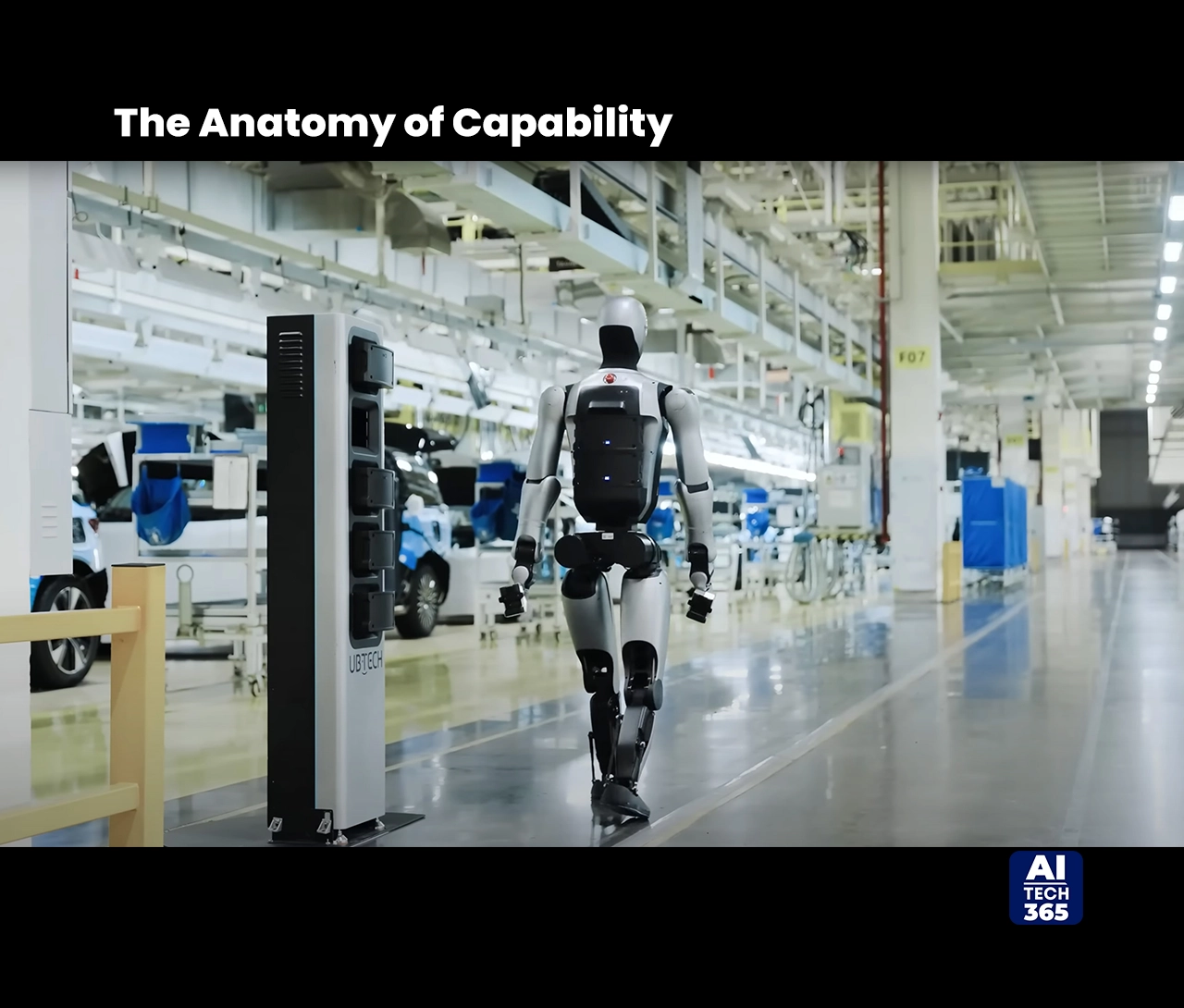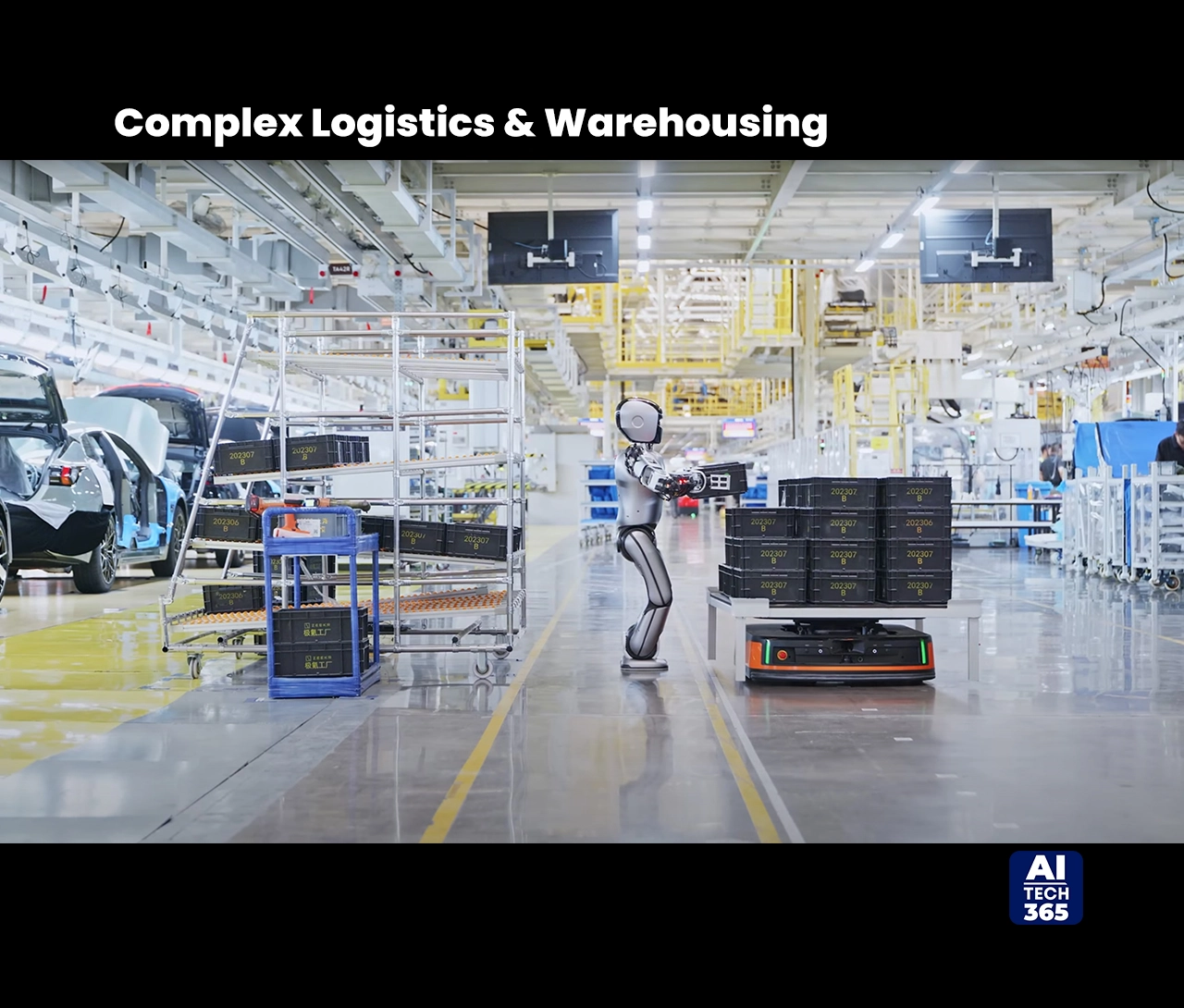Humanoid robotics often swings between impressive showcases and tough reality checks. Robots have big potential in our daily lives, but they face tough challenges. Messy environments make it hard for them to fit in. Yet, beneath the surface, relentless progress continues. UBTECH’s launch of the Walker S2 is not just another version. It marks a clear step toward real industrial use. CTOs and AI leaders face a tough automation landscape. This platform deserves more than just a quick look. It is worth serious consideration for high-value applications where traditional robotics struggle.
Engineering for the Real World
Walker S2 emerges not from a vacuum but from years of focused R&D and real-world testing of its predecessors. UBTECH seems to have consciously shifted focus from pure spectacle to practical utility. The design language itself speaks volumes. Gone are the overly sleek, futuristic curves often seen in concept bots. In their place is a robust, functional aesthetic built around performance and safety. The focus is on building a platform that can navigate unpredictable terrains. It should manage different objects in places that focus on people. These include warehouses, labs, logistics hubs, and advanced manufacturing lines.
The core philosophy appears to be ‘human-aware adaptability.’ This isn’t about copying every tiny detail of human movement. It focuses on gaining enough dexterity, perception, and mobility to perform useful tasks. These tasks should fit well within the infrastructure designed for people. Focus less on robots serving coffee at parties. Instead, picture robots moving important parts between workstations on old factory floors. Also, imagine them handling oddly shaped packages in distribution center aisles. According to McKinsey, automation could raise productivity growth globally by 0.8 to 1.4% annually, and humanoid robots play a key role in navigating unstructured environments where traditional automation fails.
The Anatomy of Capability
To grasp the potential of the Walker S2, we must look at its key technical advancements. These features aren’t separate. They work together as a system to solve real problems.
- Bimanual Dexterity Meets Force Control: The hands are a significant leap forward. The S2 features multi-axis force sensing in its fingertips and wrists. Its articulated fingers allow it to handle delicate tasks. These tasks were once only possible for specialized robotic arms. Picture gently placing a delicate circuit board. Tighten a screw just right to avoid stripping it. Handle soft packaging carefully so you don’t crush the contents. This precise force control lets the robot move both arms at once. This bimanual manipulation allows for complex assembly, detailed kitting, and careful material handling. It’s the difference between a robot that can awkwardly grab a tool and one that can use it effectively when needed.
- Whole-Body Motion: Stability is Key: Walking on two legs is tough. Uneven surfaces, stairs, and sudden nudges can throw us off balance. Walker S2 uses advanced algorithms for whole-body control. It relies on data from several inertial measurement units and foot pressure sensors. The result is dynamic balance. This lets the robot walk confidently at speeds similar to humans. It can also transition smoothly between postures like standing, crouching, and kneeling. Plus, it maintains stability while carrying payloads or manipulating objects. It’s not just about avoiding falls. It’s about working safely and efficiently with people in spaces designed for humans, not for robots.
- 3D Vision & Spatial Intelligence: Navigating and interacting meaningfully requires deep environmental understanding. The S2 has a multi-sensor perception suite. It probably has high-resolution RGB cameras. It may also include depth sensors, such as LiDAR or structured light. Ultrasonic sensors might be part of it too. This supports UBTECH’s unique AI algorithms. They enable real-time 3D scene reconstruction and object recognition. The system can even identify new items based on their shape and context. It also allows for accurate localization. The robot doesn’t just see obstacles. It understands how they relate to each other. Then, it can plan paths based on that knowledge. It can find a specific toolbox on a messy workbench. It can also locate a pallet in a dark corner of a warehouse.
- AI Brain: Learning and Adapting On-the-Fly: At the core is an advanced AI platform. This likely includes strong computer vision models. It also involves natural language processing for better human-robot interaction. This means understanding commands and giving status updates. Machine learning capabilities are also key. The promise here is adaptability. The S2 does more than follow set routines. It learns from demonstrations and improves through trial and error. This means it can adjust its movements in safe or simulated settings. Also, it can adapt when tasks or environments change slightly. Picture a robot learning how to grab a new part after seeing a few examples. It can also improve its route through a workspace by noticing daily traffic patterns. As per IDC, about 65% of Asia-Pacific organizations will embed AI across business technology categories by 2026, using AI to improve outcomes without reliance on technical talent.
Tangible Use Cases for the Strategic CTO
For smart AI leaders, the main question is: ‘How does this provide measurable ROI now or soon?’ Walker S2 isn’t a one-size-fits-all solution. It excels in situations where its unique shape and function address specific challenges:
- Complex Logistics & Warehousing:
 Beyond simple pick-and-place, envision the S2 performing intricate value-added services. This includes mixed-SKU kitting for variable orders. It also handles odd-shaped or fragile items that confuse traditional automation. Additionally, it conducts inventory checks in tough-to-reach spots. Lastly, it performs light maintenance on other automated equipment in the warehouse. It can use current human-made structures like stairs, narrow aisles, and standard workstations. This means no expensive changes are needed, which is a big plus. According to Statista, the global warehouse automation market will grow from US$ 20 billion in 2023 to over US$ 41 billion by 2028, highlighting an urgent need for versatile automation solutions like humanoids.
Beyond simple pick-and-place, envision the S2 performing intricate value-added services. This includes mixed-SKU kitting for variable orders. It also handles odd-shaped or fragile items that confuse traditional automation. Additionally, it conducts inventory checks in tough-to-reach spots. Lastly, it performs light maintenance on other automated equipment in the warehouse. It can use current human-made structures like stairs, narrow aisles, and standard workstations. This means no expensive changes are needed, which is a big plus. According to Statista, the global warehouse automation market will grow from US$ 20 billion in 2023 to over US$ 41 billion by 2028, highlighting an urgent need for versatile automation solutions like humanoids. - Advanced Manufacturing Support: The S2 acts as a flexible assistant on the factory floor.
Tasks include:
-
- Feeding parts into machines with precise alignment.
- Inspecting complex assemblies visually from different angles.
- Conducting basic quality checks like measuring and testing connections.
- Transporting sensitive sub-assemblies when conveyor belts can’t be used.
Its dexterity allows it to handle small components and tools designed for human hands.
- Laboratory Automation & Safety: The Walker S2 is great for research labs, pharmaceutical settings. It can automate tasks that are both repetitive and precise. This includes sample handling, pipetting, and setting up equipment. This lets skilled technicians focus on more complex analysis. It can handle dangerous tasks with toxic materials or biohazards. This greatly improves lab safety and lowers the risk to humans.
- Seeding Future Service Roles: The S2 now targets industrial applications. It also prepares for future service roles. Early deployments could start with low-risk tasks in public spaces. They might share basic information in places like corporate lobbies, museums, and airports. They could also conduct routine patrols and check the environment in large facilities. These deployments serve as valuable real-world testbeds while providing utility.
Also Read: 5 Best Robotic Process Automation (RPA) Tools
Navigating the Implementation Landscape
Adopting a platform as advanced as the Walker S2 is not a plug-and-play endeavor. CTOs must approach this with clear-eyed pragmatism:
- Task Suitability is Key: Don’t be tempted to use a humanoid robot just because you can. Rigorous task analysis is crucial. The S2 excels in roles that need mobility in human spaces and skillful manipulation. It’s great for changing tasks or unpredictable environments. Fixed automation won’t work well here. It will probably struggle or be too expensive for simple, fast, and repetitive tasks. Traditional robots do these jobs well.
- Integration is Key: The robot doesn’t operate in isolation. It’s important to fit well into existing workflows, ERP systems, warehouse management systems, and manufacturing execution systems. Robust APIs and development tools provided by UBTECH will be critical enablers. Expect significant upfront effort in defining communication protocols and data exchange.
- Safety Certification is Non-Negotiable: A large, strong mobile robot must follow high safety standards when working near people. Conduct thorough risk assessments. Also, follow the new safety standards for collaborative mobile robots. These standards go beyond traditional industrial robot rules. You also need to set up full safety systems. This includes sensors, software limits, and emergency protocols. This is not an area for shortcuts.
- Total Cost of Ownership (TCO) Analysis: Consider more than just the hardware cost. Include software licenses, integration services, and ongoing maintenance. Don’t forget the specialized technicians needed. You may also need to make facility changes, even minor ones. Training for staff is important too. Lastly, account for any downtime costs. It’s important to understand TCO and the value of automating complex tasks. This knowledge helps justify the investment. McKinsey notes that companies underestimate robotics deployment costs by 30% on average in their first year.
- Workforce Strategy: Successful deployment hinges on human-robot collaboration. This means changing roles and training workers to oversee, care for, and work with robots. It’s also important to clearly share the strategy with the team. The goal is to enhance, not replace. Robots should handle tasks that are dangerous, tedious, or hard on the body for humans.
Positioning for the Humanoid Future
UBTECH’s Walker S2 is more than a new product. It shows growth in humanoid robotics. It shifts from pure research demos to practical solutions. These are made for specific, valuable industrial uses. For CTOs, the message is clear: speculative humanoid robotics are out. Now, it’s all about practical use.
Ignoring this evolution carries strategic risk. Competitors who effectively use these platforms in complex, high-value areas will gain significant advantages. They will have more flexibility and resilience. They can also automate tasks that once felt impossible. They will learn key skills to manage and grow this new kind of automation.
The Walker S2 is not a silver bullet, nor is it ready for every task. But it is a powerful, versatile tool entering the automation toolbox. The forward-thinking CTO will assess its potential in their unique operations. They will identify key pain points. Their mix of mobility, dexterity, and AI can create real business value. They will begin with small pilot projects. This will help them build internal knowledge and refine their integration strategies. They get their organizations ready to adopt humanoid robotics. This technology will be a strong force in the future of work. The race to build practical humanoid robots is speeding up. The Walker S2 is an exciting step in that direction.


